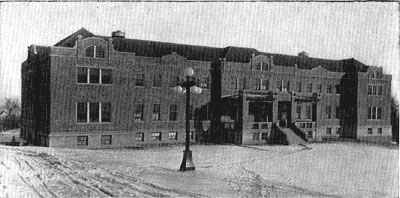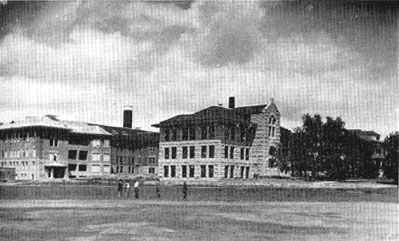be established to make sure a reasonable profit.
A patriotic service, with assurance of fair to excellent
returns, is the lot of sugar beet growers in Nebraska and
there are many farms splendidly adapted for this crop
which lack manpawer. We need more people.
POULTRY IN
NEBRASKA
In proportion to
population Nebraska is the largest producer of poultry
and eggs among the states. It is no longer a mere
"sideline" upon the farms, but has become a stable
industry of itself. During 1917 the poultry industry of
Nebraska approximated $45,000,000, and Nebraska poultry
and eggs "topped the market" throughout the eastern
marts. The egg production of Nebraska in 1917, as
reported to the Nebraska State Board of Agriculture and
the Commissioner of Labor was, in round numbers, two
hundred million dozen, with a farm value of approximately
$50,000,000. It is estimated that one-half of these eggs
were consumed upon the farms, and that the poultry
raisers of Nebraska sold $25,000,000 worth of eggs. Live
and dressed poultry shipped to market aggregated
$20,000,000 in value.
The cream check and the egg
money are no longer trifles. They are proving one of the
chief sources of income to thousands of Nebraska farmers.
The demand for Nebraska poultry and eggs is growing at a
tremendous rate, and scientific poultry raising has taken
the place of the old "hit or miss" methods. Pure strains,
proper housing, balanced feeding-these have raised the
poultry business of Nebraska to a high and profitable
plane. Here is a true story, the name of the woman being
omitted for obvious reasons. It is told in her own
words:
"A few years ago my butter
and egg money sufficed to buy the few articles of wearing
apparel I needed. I milked four cows and raised a lot of
chickens, paying no attention whatever to breeds, and
satisfied with whatever eggs I got and the few chickens
we consumed on the farm. I presume my butter and egg
money brought me in an average of $5 a month, maybe $6 or
$7. And the milking and the care of the milk and the
churning was a big job for me, along with my other duties
as a farm wife.
"I no longer churn, and
instead of milking four cows we now milk from eight to
ten. I long since got rid of all my mixed breeds of
poultry and now give as much attention to pure strains as
my husband does to his live stock. Nor do I let my
chickens run wild all the time. I have provided them with
comfortable housing, and while giving them enough room
for exercising I do not compel them to depend upon their
own rustling abilities for their feed. I see to it that
they have enough to eat and of the right kind. We no
longer wait until Saturday to take butter and eggs to
town to trade off for calico and ribbons and sugar and
tea. We go to town not less than twice a week, more often
three times. I see to it that my eggs are clean and
properly packed in cases, and my cream contained in clean
and polished cans. We sell direct
![]()

![]()
![]()



